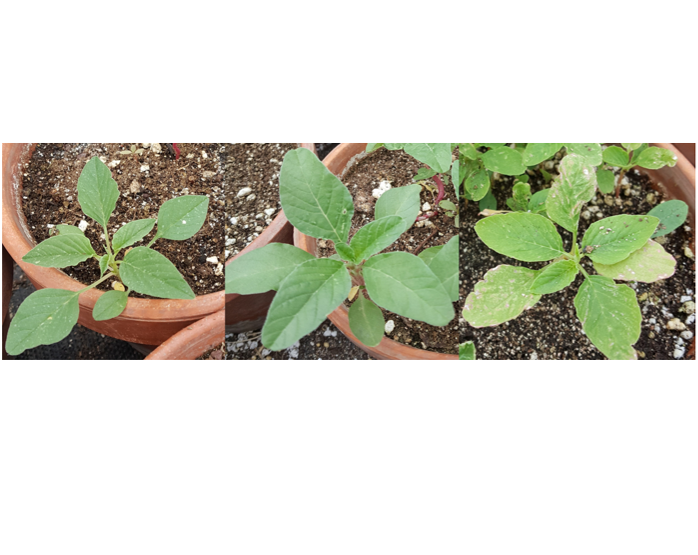An assay for detecting Palmer amaranth DNA in individual and mixed samples
A method and kit for determining whether a sample contains Amaranthus palmeri, a prohibited noxious seed in multiple states, plant material.

Applications
- Seed Purity Testing
- Agricultural Management
- Invasive Species Diagnostics
Key Benefits & Differentiators
- High Purity Testing: Capable of detecting a single palmer Amaranth seed in a pool of at least 200 Amaranthus species.
- Highly Sensitive and Specific Detection: The sensitivity of the three tests the inventors developed ranged from 99.8 to 100%, and the specificity ranged from 99.59 to 100%. Accuracy for all three tests was >99.7%.
- Easier to Use: The method can be performed with any PCR machine and plate reader.
- Cost-effective: Low cost for each test performed.
Technology Overview
Amaranthus palmeri (Palmer amaranth) is an invasive annual weed with a severe impact on agricultural systems. Effects on corn and soybean yields are most severe, with reports finding yield losses as high as 91% in corn, 68% in soybean, and 54% in cotton. For these reasons, prevention of A. palmeri establishment is a high priority, with several states that experienced large crop loss requiring the certification of any amaranth type seed as Palmer amaranth-free. Mature Amaranthus plants share enough morphological characteristics to be confusing for non-experts to identify and morphological identification of A. palmeri seeds from seeds of related Amaranthus spp. is even more challenging. The difficulty of both field tissue and seed identification led to a demand for genetic testing to identify A. palmeri against other Amaranths. Existing tests were validated against a much more limited representation of Palmer Amaranth genetic diversity. Additionally, existing tests are limited to testing 50-100 seeds at a time due to insufficient sensitivity. Thus, there remains a need for methods of genotyping Amaranth that have improved sensitivity and can detect rare alleles in mixed genetic pools.
Researchers at the University of Minnesota and Colorado State University have co-developed a method and kit for identifying Amaranthus palmeri plant material using genetic markers. This method and kit were developed by examining a comprehensive genotyping-by-sequencing dataset from the largest and most genetically diverse panel of Amaranthus populations sequenced to date. This test is able to detect a single palmer Amaranth seed in a pool of at least 200 Amaranthus species with a sensitivity ranging from 99.8 to 100%, and a specificity ranging from 99.59 to 100%. The accuracy for all three tests is >99.7%. This technology represents a marked improvement over existing commercial assays resulting in an identification assay that is (i) accurate, (ii) robust, (iii) easy to interpret and (iv) applicable to both leaf tissue and pools of up to 200 seeds.
Phase of Development
TRL: 6Demonstrated reliable detection of a single A. palmeri seed in a pool of 200 Amaranthus sp. seeds
Desired Partnerships
This technology is now available for:- License
- Sponsored research
- Co-development
Please contact Jessy McGowan at CSU Strata to share your business’ needs and learn more.
Researchers
- Donald L Wyse, PhD Professor, Agronomy and Plant Genetics
- Anthony Brusa, PhD Researcher 5, Agronomy and Plant Genetics
-
expand_more library_books References (1)
- Anthony Brusa, Eric L Patterson, Todd A Gaines, Kevin Dorn, Philip Westra, Crystal D Sparks, Don Wyse (14 January 2021), A needle in a seedstack: an improved method for detection of rare alleles in bulk seed testing through KASP, Pest Management Science, 77, 2477-2484
-
expand_more cloud_download Supporting documents (1)Product brochureAn assay for detecting Palmer amaranth DNA in individual and mixed samples.pdf